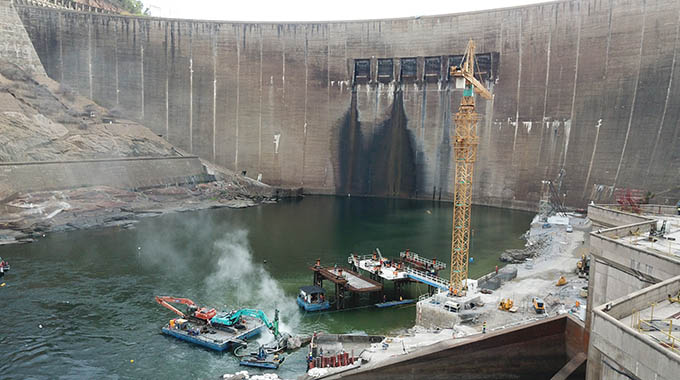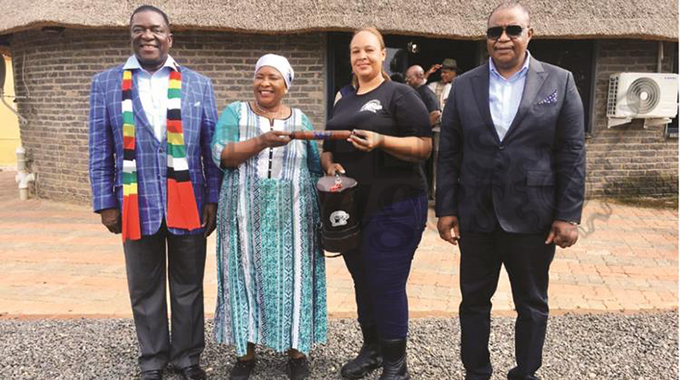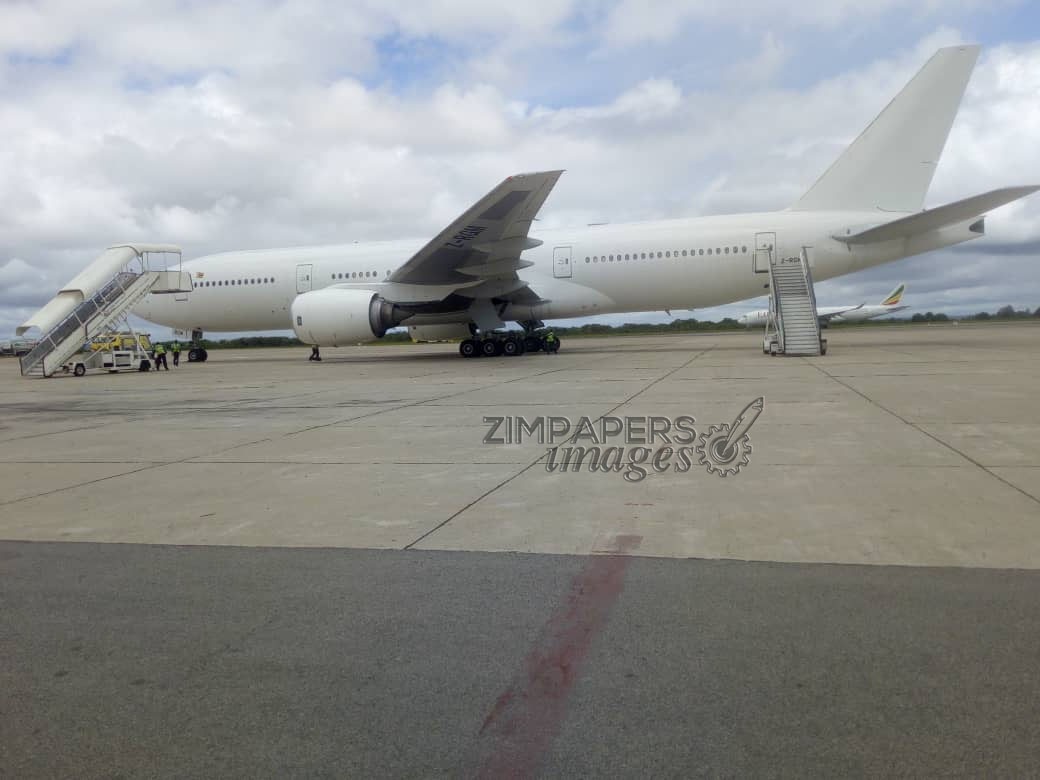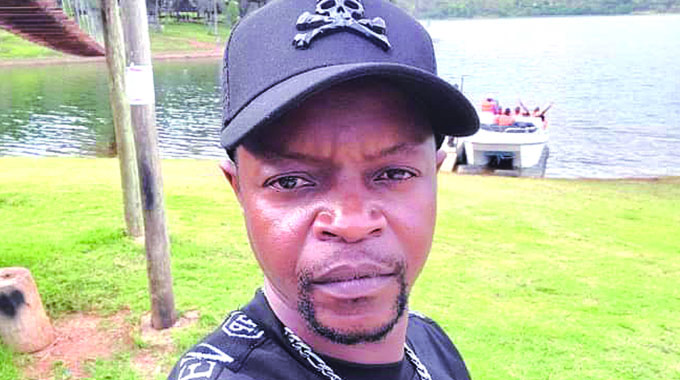Kariba: the dam that holds the future

Jack Zimba Lusaka
For the past six decades, the Kariba Dam on the Zambezi River has stood as an answer to Zambia and Zimbabwe’s energy needs, and it will for decades to come.
Located on the Zambezi River at the Kariba border between Zambia and Zimbabwe, the Kariba Dam hydropower scheme has been the major driving force behind Zambia and Zimbabwe’s economies.
“The Kariba Dam has provided energy and contributed to the economic prosperity of Zambia and Zimbabwe for over 50 years now and as the SADC Region continues to industrialize, the demand for power is projected to increase by up to 40 percent over the next 10 years,” says the EU mission to Zambia Infrastructure Head, Adam Grodzicki.
According to the Zambian Minister of Finance, Dr Bwalya Ng’andu, Zambia’s GDP has registered an annual growth of 2.7 percent, foreign trade has grown at an average annual rate of 2.45 percent. Per capita disposable income has also increased more than 100 times, and more people have been successfully lifted out of poverty.
According to the World Bank projection, Zimbabwe’s GDP is expected to grow by 3.7 percent by the end of 2019.
Zambia Energy Forum Chairperson and energy expert Johnston Chikwanda, says it will be perilous for Zambia to discount hydro-electric power generation going into future.
“Both countries cannot escape the reality that its arbitrage lies around hydro-electric generation and this arbitrage will remain in place for a very long time despite wicked threats of climate change,” he says.
“To this end, the future of hydro-electric generation will still occupy a significant portion of both countries’ energy portfolio despite threats imposed by climate variability,” he added.

Kapenta Rig Lake – Kariba
Mr Chikwanda says despite efforts to exploit other sources of energy, the Kariba Dam and other major dams will still remain a significant source of energy for many years to come.
Currently, only 25 percent of Zambians have access to electricity and in the rural areas, the level of access is less than five percent. In Zimbabwe, electricity has reached 79 percent of urban households, but rural electrification is still below 19 percent.
And across Africa, half of the continent’s 1.2 billion people have no access to electricity. This obviously has a negative effect on economic growth.
“Investors need secure and cost-effective power supply for their operations. Power is the key to placing countries on the global investment map,” said World Bank economist, Ziva Chinzara.
In Zambia, foreign direct investment (FDI) increased by $223.8 million in the first quarter of 2018. The same figure for Zimbabwe is over $1 billion, compared to $150 million recorded in in the previous year’s first quarter according to the Zimbabwe Investment Authority (ZIA).
According to Mr Chinzara, “repeated power outages result in loss of production. Reliable and cost- effective power drives cost down and profits up – without lights, there is no action.”
Both Zambia and Zimbabwe are striving to attain middle-income country status by 2030.
And hydro-electricity will play a key role in this.
The Kariba Dam Rehabilitation Project (KDRP) is bankrolled by the EU (US$100 million (100 percent grant financing), the World Bank (US$75 million), the African Development Bank (AFDB) (US$36 million grant and $39 million loan), and Sweden (US$20 million) with the balance being paid by Zambezi River Authority.
The rehabilitation project is creating some job opportunities for skilled and semiskilled workers, particularly pertaining to the plunge pool reshaping currently underway.
“The Rehabilitation of the Kariba Dam was agreed to be of the highest priority due to its economic importance for Zambia, but also for a wider Southern African region,” explains Adam Grodzicki.
The fact that international financiers were quick to respond shows that Kariba Dam is not only a good return on investment but is very valuable for a wide variety of other reasons.
“Electricity is an essential factor for sustainable development, for employment and poverty eradication and contributes greatly to improved living conditions. Electricity is key for increasing poor people´s opportunities to support themselves by obtaining work, starting, and running productive businesses,” says Swedish Deputy Ambassador Magdalena Svensson.
Svensson says that the high cost of the KDRP was worth it given its potential for securing the ongoing, long-term reliability of the Kariba Dam and its socioeconomic contribution to both Zambia and Zimbabwe, and the southern African region.
“With an estimated three million people living in the potential impact area at risk and the economic value of assets estimated in excess of US$8 billion,” she says.
The benefits of the Kariba Dam are immense.
Besides mining, the dam has also created a flourishing tourism industry on either side of the border. The dam also supports a large fishing industry.
The dam repair has raised hopes for people in Kariba and Siavonga, the two towns overlooking Kariba Dam, with the promise of jobs and increased business opportunities that the influx of people into the area for the duration of the project will bring.
To date, over 70% of the unskilled workers employed on the plunge pool rehabilitation are from Siavonga and local contractors provide security and earth moving services and transport the aggregate used on the contract.
“The main impact has been on hotel accommodation,” says Siavonga Tourism and Development Association Chairman Steve Thompson.
“There has been an increase in the number of local people employed and more money has been put in the economy.
Every sector is optimistic about the economic returns of the rehabilitation project,” according to Siavonga District Commissioner, Lovemore Kanyama.
He added that “The real substantive jobs will come with time as investors are assured of the availability of sustainable energy following the dam repair.”
Electricity and lighting has also brought immense value to health clinics, maternity care and within schools, although more needs to be done to increase access to electricity.
Zambian Minister of Energy Mathew Nkhuwa says the future of Zambia’s energy still lies in hydro-power, and the Kariba Dam remains the most important installation in the sector.
Zambia also has hydro-power stations at Kafue Gorge, with installed capacity of 900mw, Kariba North Bank with installed capacity of 1,080mw, plus other smaller installations.
“The future is still hydro and Kariba is a very important dam,” says Mr Nkhuwa. “We produce about a thousand megawatts from the Kariba and that’s a lot. That is 33 percent out if the Kariba is not there. So we have to do everything possible to make sure that the Kariba is there so that we continue getting electricity from Kariba.”
With copper as Zambia’s chief export since independence in 1964, this dam is like a cog turning the wheel of development.

Siavonga Market trading Kapenta
The dam was principally built to supply power to a then budding manufacturing base in Zimbabwe and copper production in Zambia’s mines.
For underground mines, the bulk of the electricity is used to dewater the mines.
For instance, Konkola Deep in Chililabombwe, which is operated by Konkola Copper Mines, uses about 90 megawatts of electricity, two-thirds of which goes towards pumping huge volumes of water from the mine.
Konkola Deep is one of the deepest underground mines, reaching up to 1,500m into the earth. It is also arguably the world’s wettest underground mine.
About 350,000 cubic metres or 350 million litres of water is pumped out of the mine every day. That is enough water to fill 140 Olympic-sized swimming pools.
It is said that if the pumping of water was halted for just a few hours, the mine would get flooded, crippling operations.
To avoid this, the mine needs a steady supply of power.
Chamber of Mines Chief Executive Sokwani Chilembo says the chamber attaches great importance to the rehabilitation works currently going on at Kariba Dam.
“The Kariba Dam is key. It is the largest supplier of power for the industry and we think the rehabilitation project extends the life and the stability of supply from that source, which is a great thing for the industry, because we rely heavily on the dam,” he says.
Although low rainfall over the years due to climate change has meant a reduction in the amount of electricity generated at the hydro-electricity power station, Mr Nkhuwa says that problem could be remedied.
“We have had droughts before, it’s not a permanent thing. We just need to look at how we can fill the Kariba Dam,” he says.
“There is some suggestion from Zambezi River Authority that we can get water from the Kafue and pump it into the Kariba,” he added.
He says Government is “trying to consider that.”

Kariba Dam Tourism Publicity Center – Kariba
And there is an even more ambitious plan to channel water from the Congo River in the Democratic Republic of Congo, into the Zambezi River, near its source in the Kaleni Hills in North-Western Province.
The Inga Dam, which sits on the Congo River, is not far from the source of the Zambezi.
“We can get water from Inga and pump it into the Zambezi, I think the distance is only 47km, so we can make canals and pump that water,” says Mr Nkhuwa.
“So we are thinking along those lines, because the investment that we have put in Kariba for the hydro-power is enormous,” he says.
Mr Chikwanda notes that Zambia has potential to harvest at least 6,000mw from water bodies alone but only slightly above 2,000mw is currently being harvested. The recently completed Kariba South Power Station Extension project has added another 300 megawatts of power to Zimbabwe’s national grid, increasing the station’s total output to 1,050mw.
The European Union regards the preservation of the Kariba Dam asset as being vital to ensuring energy security, by contributing to enhance regional power trading, and to continued development across the region.









Comments